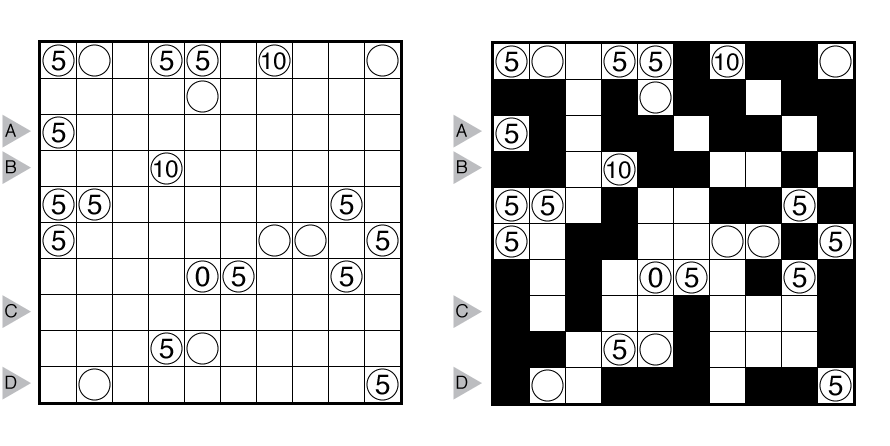Kurotto Rules and Info

Rules: Shade some cells so that each circled number represents the total count of shaded cells in connected groups sharing an edge with that number. Cells with circles cannot be shaded.
Answer String: Enter the length in cells of each of the shaded segments from left to right for the marked rows, starting at the top. Separate each row’s entry with a comma. This example has the key “1221,221,1111,132”
(Brief) History of Kurotto: Kurotto is a relatively recent puzzle creation, first published in 2012 by Nikoli in quarterly Communication 138; the original author of the style was 活火山 (pronounced Katuskazan, a likely pseudonym meaning “Live Volcano”). It was inspired by other shading puzzles. The original name was “クロユニット” or Kuroyunitto (Kuro meaning “black” and “Yunitto” meaning the English homophone “unit”). The name was soon shortened to Kurotto, but there is a double meaning to this as Kurotto can also mean the English homophone “clot”.
History of this example: This “multiple of 5” Kurotto was written by Grant Fikes for the Grandmaster Puzzles website.
Sources for Kurotto Puzzles: Follow this link for Kurotto puzzles on this website. If you are new to this puzzle type, here are our easiest Kurotto Puzzles to get started on. More Kurotto puzzles can be found in the ebook Kurotto by Prasanna Seshadri.
Design rules for contributors: A Grandmaster Kurotto will have a unique solution that can be reached by logic alone. Generally, a Grandmaster Kurotto will have symmetric clues or an interesting visual theme (such as in the values of the clues) in the absence of symmetry. Sizes from 8×8 and above are recommended (maximum aspect ratio of 2:1 if rectangular).
